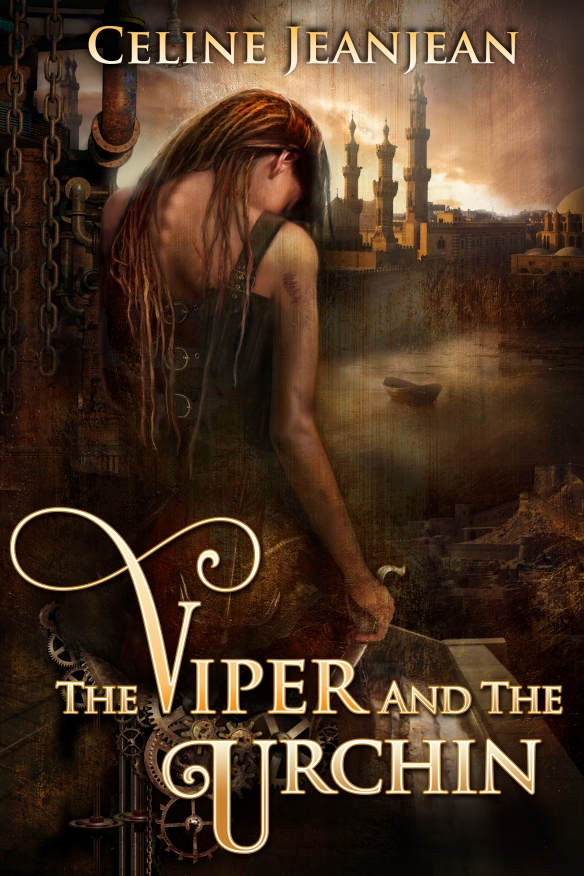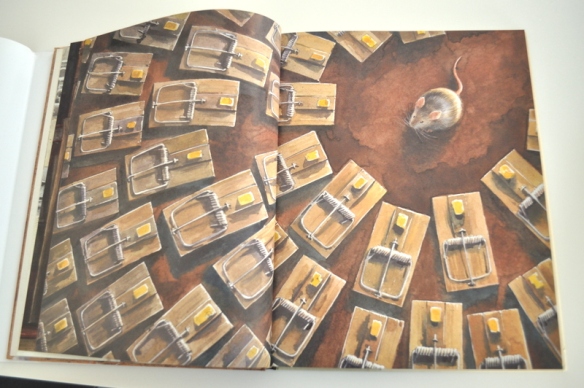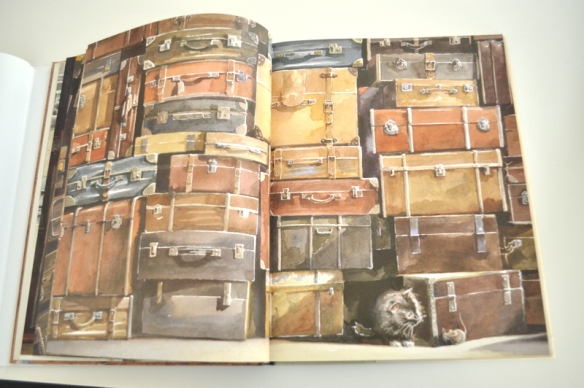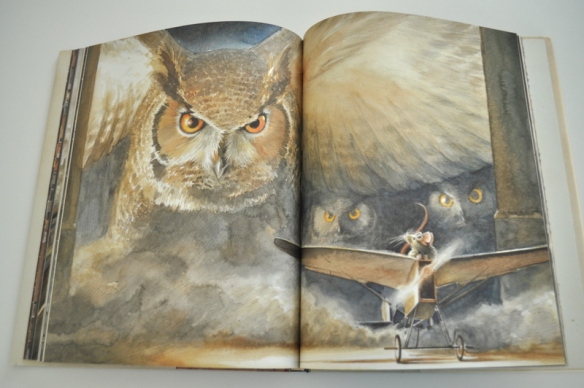*The theme for my A to Z is Childhood Stories. Some are real, some are embellished, some are downright fictional but are based on the kind of things I imagined when I was younger.*

A very quick forward before this story: this one is entirely fictional, and is based on an old English folktale which I found in Neil Philip’s wonderful The Penguin Book of English Folktales. It’s sadly out of print, but if you come across it in a second hand bookshop I’d highly recommend it. Some of the tales are amusing, some sad, and some very dark and gothic (including a great story that Dickens’ Nanny told him growing up, and one that terrified him as a child).
***
“Now remember, don’t play over on the Main Road,” said my mother. “You stay on our street.”
I sighed. “Yes mum, I know.”
“I mean it now. If you go on the Main Road, Mr Miacca will come get you.”
I rolled my eyes — I’d heard the warning hundreds of time.
“Yeah alright, I’ll stay on our street.”
I headed out into the early summer sunshine. There was plenty to get on with on our street, but of course, none of it was as interesting as the forbidden Main Road. I looked over at it. There was a sweet shop across the road and a newsagent next to it. I wanted to go have a look.
Mum was in the kitchen so she couldn’t see me out of the window. Maybe if I was quick, she wouldn’t know.
I ran.
When I stepped onto the Main Road, I was surprised to find that the cars on the road and the people on the pavement vanished. I looked around to find the shops were empty. I walked on, puzzled. It was darker somehow on the Main Road, the colours looked different, and there was a faint tinkling in the air, as though tiny bells were ringing in the distance. It made me want to run back home, but I brazened it out.
I’ll just go as far as the lamppost and then I’ll turn back.
I walked quickly.
Behind me, the sound of bells intensified. I turned to find Santa’s carriage flying down towards me — except that it was drawn by dogs and instead of being a sled, it had wheels. At its helm was a man wearing a waistcoat and trousers, with the head and tail of a fox.
Mr Miacca.
“Well, well, little girl,” he said. “Welcome to Unauthorised. Into the bag you go!”
I tried to run but the dogs were faster than me. Mr Miacca grabbed me by the collar and bundled me into the bag. The carriage clattered away and then fell silent: we were flying.
“Where are you taking me?” I shouted from inside my bag.
“To Mrs Miacca.”
A few minutes later I felt the carriage land and Mr Miacca picked me up with the bag. A door slammed. I was dropped out of the bag, rolling out onto a large wooden table. I shook my head to clear the dizziness. We were in a sun filled kitchen with window boxes full of plants I didn’t recognise, and there was a blue mixing bowl in the sink.
“Petunia dear! I’ve brought dinner.”
“Good, good.” Mrs Miacca entered the kitchen. She was a heavy, fleshy woman wearing a flowery pinafore, and she had the same head and tail of a fox as Mr Miacca.
“What’s this?” she asked. “I specifically told you to get a boy.”
“That’s a boy,” said Mr Miacca.
“Er, excuse me,” I pipped up. “I am not a boy, I’m a girl.”
Mr Miacca threw me an annoyed look.
“Now don’t you try and pull one over on me, Algernon.” Mrs Miacca waggled a finger at him. “You know girls don’t agree with you.”
“Well I just thought –”
“I know what you just thought. You thought you could pass her off as a boy because she’s wearing shorts and a T-shirt, not a dress.”
“But girls taste better.”
“You know what the doctor said: a boy only diet for the next month. More nutrients in boys — think of your anemia.”
“Why are there more nutrients in boys?” I asked.
“Boys tend to be more naughty. You –” Mrs Miacca gave me a good sniff — “Have a bit of naughtiness clinging to you, but nearly enough for me to make a full meal out of it.”
“You eat naughtiness?”
“Obviously,” she replied. “What else would we eat?”
I had no answer.
“But see dear, that why I grabbed her,” said Mr Miacca. “Since we need to lose weight and all –”
“Who needs to lose weight?” Mrs Miacca’s tone had both Mr Miacca and I carefully looking in every direction but hers. “Hmm? Who needs to lose weight?”
“M-me dear,” he replied.
“Yes, well, you have put on a few pounds recently.”
Mr Miacca and I studiously avoided making eye contact with her again.
“Now,” she continued, “did you at least get me the condiments I asked for?”
Mr Miacca’s head retreated between his shoulder as if he was trying to imitate a turtle. He gave me a panicked look.
Don’t drag me into this, buddy.
“Well?” asked Mrs Miacca. “Did you get the badger tears? The dreams of an old man? The mustard?”
“Ummmm –”
“I even wrote you out a shopping list.”
“I think I lost it on the way — must have flown out of my pocket. Anyway I didn’t have time: she just appeared in front of me, so I grabbed her and came home. We could –”
“No, we are not having that disgusting Brown Sauce you brought back last time. Even if there are badger tears in it. Why humans would eat it voluntarily is beyond me. Sometimes, Algernon, I wonder if you were born without taste buds.”
“Yes dear.”
“Now you will take the girl back to where you found her, and go find us a boy with sufficient naughtiness. I’m hungry. And don’t forget the condiments this time — the mustard should be whole grain by the way.”
“Yes dear.”
“And hurry about it or we’ll be late for bridge with the Toothfairy and La P’tite Souris.”
“Yes dear.”
Mrs Miacca wrote a new shopping list, thrust it at her husband, and swept out of the kitchen. With a sigh, Mr Miacca gestured for me to follow him and we headed to the carriage.
“Why is your carriage just like Santa’s?” I asked.
“He borrows our winter carriage to get around at Christmas time. He’s not very organised, old Santa. Always coming to us in a bind at the last minute, to find out which kids have been naughty.”
“How do you know?”
“All the Unauthorised places of the world belong to Mrs Miacca and I. We know as soon as child steps into one of them.”
“Are you going to tell Santa about me?”
“Absolutely. Especially considering the hassle you’ve cost me.”
“So what, that means I won’t get any presents?”
“I don’t know, it depends on him. Now get on.”
I frowned, a little worried this Christmas would be bare. Mr Miacca picked me up and slung me on the front seat, climbing on after me. The dogs wagged their tails and barked excitedly.
“Giddy-up!” called Mr Miacca, twitching the reins. The dogs ran ahead, pulling us behind, and then we lifted off. It was like being in a plane, only better. We went so fast, my eyes were streaming from the wind, and the land beneath us was a blur.
In a few minutes we were over London, like a cluster of dollhouses beneath us through which ran a blue shoelace — the Thames. Mr Miacca brought us down and we landed on the Main Road, just outside my street.
“Go on then,” he said. “Off you trot.”
I climbed down. “Bye Mr Miacca!”
“Feel free to come back in Unauthorised again next month, once my boy only diet is over,” he said with a grin.
I thought about it. “Ok I will, but only if you don’t tell Santa about me — this time and next time.”
“Ok, you have yourself a deal.” He leaned down and we shook hands.
When I reached my street, I looked back over my shoulder. Main Road looked normal once more, with cars running through it, and people on the pavement. Of Mr Miacca and his carriage, there was no trace.
















 This is a must for any mythology and fairytales/folktales lover. In the Night Garden starts off with a little girl who has been cast out into the Palace Garden of a sultan. Around her eyes are two large, inky stains, which are in fact made of tiny writing — said writing containing magical tales that coil around her eyes.
This is a must for any mythology and fairytales/folktales lover. In the Night Garden starts off with a little girl who has been cast out into the Palace Garden of a sultan. Around her eyes are two large, inky stains, which are in fact made of tiny writing — said writing containing magical tales that coil around her eyes.



 In a future where the ice caps have melted, the water has risen, and temperatures are soaring, London has become half submerged swamp-land in a new Triassic age. Prehistoric reptiles swim through lagoons in front of the now abandoned and inundated Ritz, the walls of which are covered by creeping tropical plants.
In a future where the ice caps have melted, the water has risen, and temperatures are soaring, London has become half submerged swamp-land in a new Triassic age. Prehistoric reptiles swim through lagoons in front of the now abandoned and inundated Ritz, the walls of which are covered by creeping tropical plants. I’m developing a bit of a thing for beautifully illustrated children’s books. This is one gorgeous book that most definitely deserves to be bought in hardback. The illustrations are by Chris Riddell, in ink with gold highlights.
I’m developing a bit of a thing for beautifully illustrated children’s books. This is one gorgeous book that most definitely deserves to be bought in hardback. The illustrations are by Chris Riddell, in ink with gold highlights.


 I came to Wodehouse (the creator of the infamous duo, Jeeves and Bertie Wooster) rather late, but I am making up for lost time. Wodehouse is brilliantly funny, manages to capture a certain aspect of britishness superbly well, but more to the point, the writing is absolutely delicious. It’s the kind of book that makes me want to stop every few sentences to read a line aloud.
I came to Wodehouse (the creator of the infamous duo, Jeeves and Bertie Wooster) rather late, but I am making up for lost time. Wodehouse is brilliantly funny, manages to capture a certain aspect of britishness superbly well, but more to the point, the writing is absolutely delicious. It’s the kind of book that makes me want to stop every few sentences to read a line aloud.



















